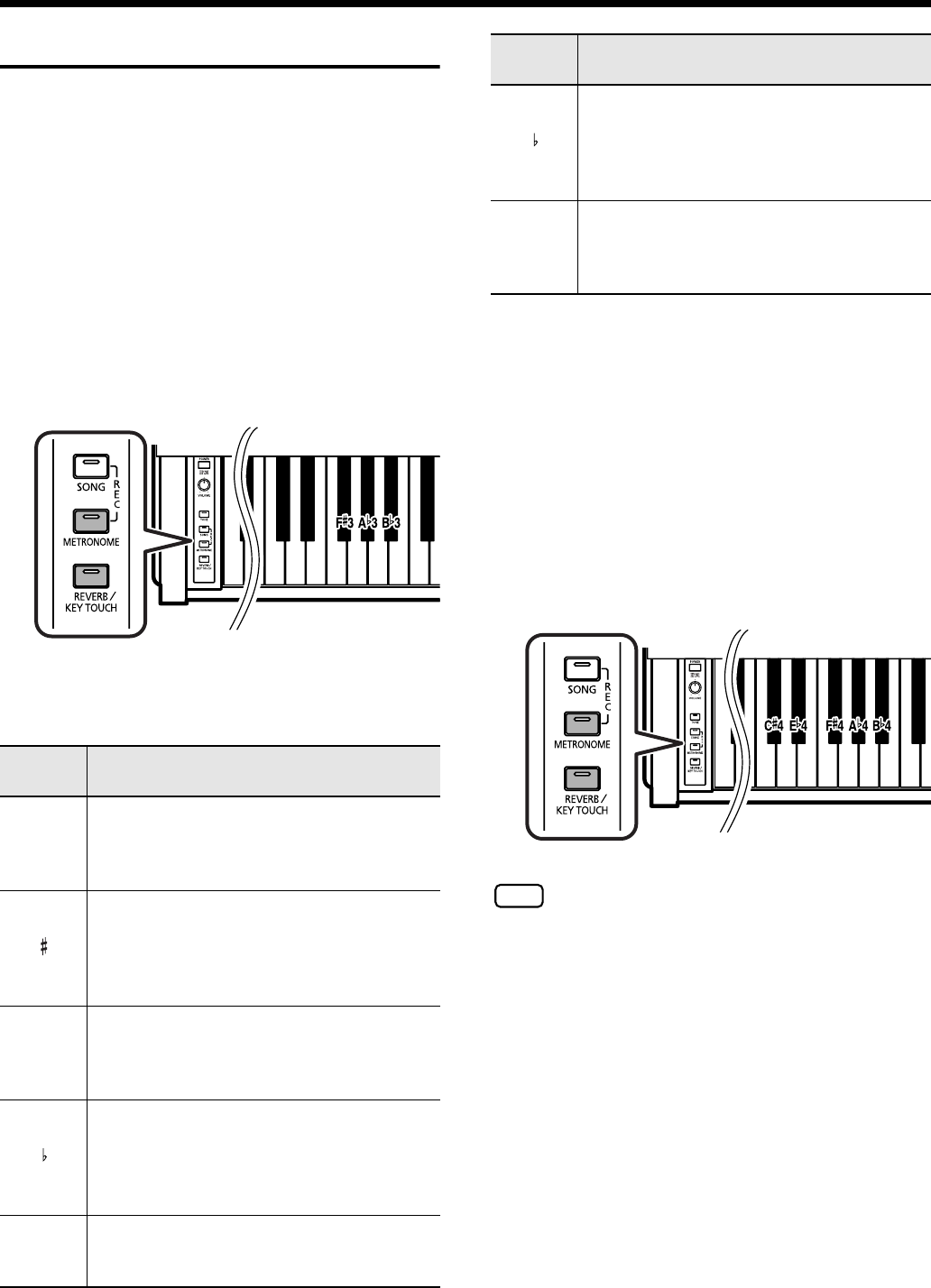
33
Changing Various Settings
Changing the Temperament
You can play classical styles such as Baroque using historic
temperaments (tuning methods).
Today, compositions are generally created with equal
temperament in mind and are played using equal
temperament. However in past ages of classical music, a
variety of temperaments were used. Playing a composition
with its original tuning lets you enjoy the sonorities of the
chords that the composer originally intended.
This is set to “Equal” when the instrument is turned on.
1.
While holding down the [METRONOME] and
[REVERB/KEY TOUCH] buttons, press the
appropriate key (F3–B3) on the keyboard.
You can choose from among the seven temperaments
described below.
■
Setting the Tonic
When playing with tuning other than equal temperament, you
need to specify the tonic note for tuning the song to be
performed (that is, the note that corresponds to C for a major
key or to A for a minor key).
If you choose an equal temperament, there’s no need to select
a tonic note.
1.
While holding down the [METRONOME] and
[REVERB/KEY TOUCH] buttons, press the tonic (root)
of the key (C4–B4).
NOTE
When performing in ensemble with other instruments, be
aware that depending on the key, there may be some
shifting of the pitch. Tune the HP201 to the standard pitch
of the other instruments.
Key
Pressed
Temperament/Qualities
F3
Equal
In this tuning, each octave is divided into twelve
equal steps. Every interval produces about the
same amount of slight dissonance.
F3
Just Major
This tuning eliminates ambiguities in the fifths
and thirds. It is unsuited to playing melodies
and cannot be transposed, but is capable of
beautiful sonorities.
G3
Just Minor
The Just tunings differ from major and minor
keys. You can get the same effect with the minor
scale as with the major scale.
A3
Kirnberger
This is an improvement of the Mean Tone and
Just tunings that provides a high degree of
freedom of modulation. Performances are
possible in all keys (third method).
A3
Mean Tone
This scale makes some compromises in just
intonation, enabling transposition to other keys.
C3
F3 G3 A3 B3
A0
B3
Pythagorean
This tuning, devised by the philosopher
Pythagoras, eliminates dissonance in fourths
and fifths. Dissonance is produced by third-
interval chords, but melodies are euphonious.
B3
Werckmeister
This temperament combines the Mean Tone and
Pythagorean tunings. Performances are
possible in all keys (first method, number three).
Key
Pressed
Temperament/Qualities
F4C4 D4 E4 G4 A4 B4
A0
HP201_e.book 33 ページ 2007年2月28日 水曜日 午前9時10分


















